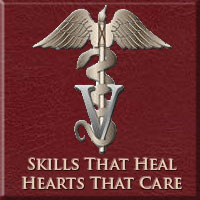|
|
|
|
SCHOLARSHIP
RECIPIENT SCOTT
KRAMER
|
Planes, Trains, Automobiles and Pigs!
-Scott Kramer
PhD, Class of
2016 MSU CVM |
|
|
I want to thank the
Schwartz Family
Veterinary
Scholarship for the
very much
appreciated award
with which I was
able to attend the
2014
European Symposium
for Porcine Heath
and Management (ESPHM)
in Sorrento, Italy
and complete a Swine
Medicine Externship
at CReSA, Barcelona,
Spain.
Well, I finally made
it to Sorrento after
a very unforgettable
outbound flight. Of course we had a
full plane on our
departure from
Detroit, but
everyone was in a
good mood. The
strangest things
kept happening
following departure.I kept seeing what
looked like flash
photography in the
cabin and thought
that was a bit
strange- until it
happened at my seat. |
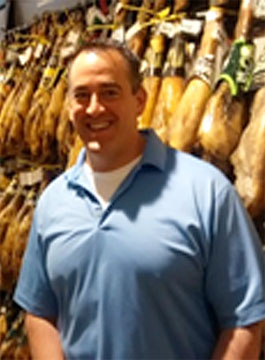 |
|
|
Apparently, the seat
lighting had a mind
of its own and was
flashing on/off
randomly all over
the plane. Then, the
audio-visual
equipment would fast
forward/reverse/change
languages and
stations all on its
own. The flight
attendants had said,
“that is really
strange.” Thank
you…I agree. They
had told the plane
that they had
“re-booted” the
system…to no avail.
I decided to just
sleep like most
people did only to
be awakened to, “Is
there a doctor on
board?” Now I’m
feeling like this
was an episode from
The Twilight Zone.
The woman diagonal
and behind me was on
the floor in the
galley. I told the
flight attendant
that I was a third
year veterinary
student if I could
help but
fortunately, the
woman sitting next
to her was on her
way to Doctors
Without Borders
experience and able
to attend to the
woman. After a very
unsettling 20
minutes the captain
announced that
ground control
wanted us to turn
around and remove
the passenger from
the plane in Nova
Scotia. On the
ground in Nova
Scotia the
paramedics were able
to speak to the
woman who was from
Nigeria and 8 months
pregnant traveling
alone and had been
sick earlier in the
week. The woman was
safely removed from
the plane and taken
to a local hospital.
There wasn’t an
“outbreak” or any
other “zombie
apocalypse” scenario
thankfully. Arriving
4 hours later than
expected, connecting
flights and trains
were missed but
surprisingly easily
rescheduled. I
arrived safely in
Sorrento late that
night. |
|
|
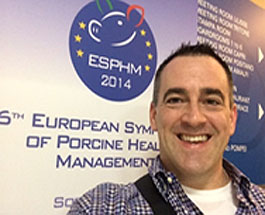 |
The ESPHM is “the” European swine meeting. Although smaller than the American Association of Swine Veterinarians (AASV) meeting, the ESPHM hosts a very diverse population and addresses an impressive array of topics from basic to applied swine husbandry and medicine. While the geography of Europe is quite obvious it was naïve of me not to think about the differences in attitudes across Europe. |
|
|
It is very apparent
that northern Europe
is more driven by
social ideals such
as animal welfare,
while the south has
a much more
production oriented
drive. The main
objective of course
is supporting
healthy, well cared
for animals and a
safe food product
for human
consumption
globally.
I enjoyed meeting
fellow swine
researchers and
practitioners from
across the globe and
had made a
connection with a
swine practitioner
in France for an
externship next
summer if my
clerkship schedule
allows for it. I
also met a few swine
medicine students
from the University
of Minnesota who, on
a similar mission,
had spent time with
swine practitioners
in France,
Netherlands and
Spain. It’s always
nice to network with
colleagues as well
as make new
connections. What I
enjoyed most about
the ESPHM was
learning how the
same topic/concern
can be
interpreted/investigated
by others. I believe
that type of
understanding allows
for a more
well-rounded
approach to
comprehension of the
topic and more
productive research.. |
|
|
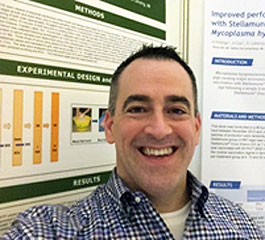 |
I presented my poster titled, A study on pre- and post-suckling serum total protein and influences by different day one pig care, to a receptive group of attendees in the Immunology and Vaccinology section on the final afternoon.
I discussed different methodologies and plans for continued investigation with investigators working in similar areas. |
|
|
To summarize the
2014 ESPHM meeting I
would say that the
top 3 take-home
messages included:
- Managing the use and
risk of antibiotics
in pigs
- Continued
improvements in the
diagnostic/investigation
of viral diseases
- The role
of
international
trade on the
spread of
pig diseases
The latter topic,
especially important
today as the United
States combats the
aggressive porcine
epidemic viral
diarrheal virus
(PEDv) which is
suspected as having
come from abroad. I
thoroughly enjoyed
my time at the 2014
ESPHM meeting in
Sorrento, Italy. |
|
|
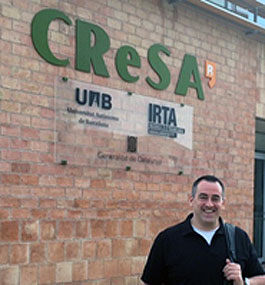 |
Now, as a third year veterinary student at the College of Veterinary Medicine / Michigan State University with definite career ambitions in the swine industry as a global swine herd health veterinarian, my intentions for this externship were to allow me to network with professional colleagues and expand my knowledge of swine medicine and production.
Last year, I had interviewed the ESPHM keynote speaker, Dr. Joaquim Segales, and was invited to visit his laboratory at CReSA in Barcleona, Spain. |
|
|
Dr. Segales is a
world renowned
researcher and
speaker in the area
of foreign and
emerging swine
diseases. The
Foundation Centre de
Recerca en Sanitat
Animal (CReSA) is a
public foundation
created in 1999 for
conducting research
in animal health and
takes advantage of a
new technologically
advanced building,
with level-3
biocontention (BSL3)
for conducting
research, grouping
efforts and
channeling new
resources in this
field.
Upon arriving at
CReSA I was kindly
introduced to, I
think…the entire
building. My visit
included a tour of
the BSL-2
laboratories
including the
Bacteriology,
Virology, Histology,
Anatomical Pathology
and
Parasitology/Entomology
laboratories. I have
to say that the
Parasitology/Entomology
lab was extremely
interesting. Not
only had I never
been to an
entomology lab
before this but to
arrive to hear that
they were
investigating an
outbreak of Blue
Tongue Virus just
really made it all
“real”. I was able
to see how the
culicoides were
grown as well as
mosquitoes for an
up-coming West Nile
Virus investigation.
Although we had
discussed African
Swine Fever research
in our initial
interview, Dr.
Segales is perhaps
more well known for
his research on
Porcine Circovirus
(PCV2) and was the
current and ongoing
topic of research. I
was able to see and
compare slides from
infected and control
animals as well as
prepare slides with
a fellow
investigator from
Bulgaria for her
PCV2 in-situ
hybridization
studies.
I worked alongside a
technician preparing
porcine intestinal
tissues for
embedding in
paraffin for
histological slide
preparations,
created tissue
sections using a
microtome and
subsequent slide
mounts for a
nutritional study.
We also made
histological
measurements of
ileum and jejunum
samples for a
concurrent study. I
found this
experience
invaluable and
totally enjoyable.
Additionally, I
learned how to
culture salmonella
from chicken cloacal
and egg samples in
the bacteriology lab
and observed
adenovirus
amplification in
eggs in the virology
lab. To have this
“hands on”
experience in such a
great laboratory was
really a gift. While
I was not allowed in
the BSL-3 area, I
was given a tour
from the outside
which had large
windows to observe
the individual
laboratories- again,
something that I had
never seen before.
The animal area was
interesting in that
it was three levels-
an upper level for
ventilation and
mechanics, a middle
layer for the
animals and necropsy
and a lower level
for waste disposal.
On the research
side…Dr. Segales had
arranged for me to
be involved in two
separate projects:
- PRRS Vaccine
Challenge
The project was set
at a commercial
swine farm and was a
PRRS vaccine
challenge in market
weight boars. The
barn work included
blood sampling, oral
fluid collection,
nasal swabbing,
weighing, virus
challenge and random
assortment of
animals.
- Atrophic Rhinitis
Oral Fluids
Collection Study
The project was set
at a commercial sow
farm. We had set-up
ropes for oral fluid
collection in sows
and piglets at
different ages and
had also taken
environmental
measurements for an
atrophic rhinitis
study.
|
Clinically…I worked
alongside (European
College of Porcine
Health and
Management) ECPHM
resident Dr. Antonio
Vela in Zaragoza,
Spain. Dr. Vela
works at Ars Alendi,
a company related to
the production of
feed for livestock,
where he develops
his work as a
veterinarian in
charge of swine.
We had toured the
company farms and
discussed in depth
the swine industry
in north-east Spain
including the
challenges faced by
producers and impact
of the crisis in
Europe on swine
production.
The area produces
approximately 65% of
the pork for Spain
and a majority of
the production units
are integrated
systems. Other
challenges include
the facts that waste
management is a huge
issue here and that
Spain imports
approximately 80% of
their feed
ingredients. |
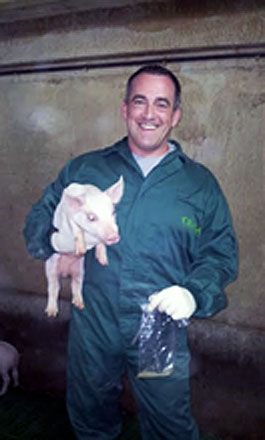 |
|
|
Like the US, PED is
present here and…is
endemic. The strain
of PED in Europe is
less virulent than
that in the US and
does not have the
dramatic impact here
as it is having in
the US today. Also,
there is another
pork market, the
Iberian swine, which
are raised outdoors
in the south-west of
Spain and fed on
acorns and pasture.
The meat of the
Iberian swine is
unique in its fat
content and is a
staple of the cured
meat industry in
Spain.
I honestly can’t say
enough about my
experiences in
Spain. Not only were
my hosts wonderful
and inclusive but
the degree to which
I was exposed to
swine production and
medicine was truly
priceless. Thank you
again for your
support. |
|
|
|
|
|
|
|
|
|
|

